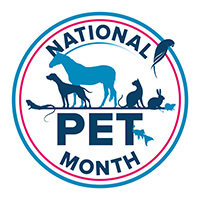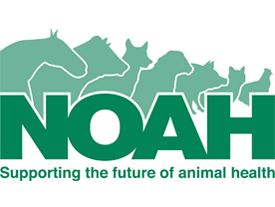What my rescue dog taught me about canine behaviour

NPM team member Asha Clearwater, talks about her rescue dog Bailey and overcoming his separation anxiety.
When Bailey came to live with us he was just under a year old.
A cocker spaniel, poodle cross, he’s a bundle of energy. From the minute he wakes up to the moment he goes to sleep, he’s inquisitive and playful.
But he can also be destructive and demanding, if he’s not given the right amount of physical and mental exercise..jpeg)
As well as playtime in the garden and walks, he loves off lead exercise in a doggy park and sniffing out treats in his snuffle mat and in his dog friendly puzzle toy.
Bailey appeared in our life after a change in his first owner’s personal circumstances meant she could no longer care for him.
Home alone, he was suffering from separation anxiety, so the difficult decision was made to seek a new home for him, preferably with other canine companions.
We were that new home with two dogs ready to meet and greet him. The ‘girls’ – a rescue Labrador and poodle cross - welcomed him with open paws, and after all the checks were carried out, Bailey came home with us.
He settled quickly into his new routine, but then came lockdown and endless hours spent with his human ‘mummies’.
We didn’t notice the change at first. Too distracted by the worries of Covid, we failed to spot the small changes in his behaviour. The way he would follow us from room to room or start whimpering if one of us dared to leave the house for a few minutes to put the rubbish out.
He’d start pacing when we went out of sight for a few moments and if we dared to go to the garden without him, that’s when the whining would start.
Then he began taking things like pens or paperwork from the table and started chewing them – anything to get our attention..jpeg)
We knew things had to alter and so gradually brought in some changes.
HOW DID WE ADDRESS THE ISSUE?
We went back to basics. You can too.
The most important thing is to remain calm, relaxed and patient.
- Start by walking a short distance away from your dog. If they stay calm, walk back to them and reward them.
- Repeat the exercise, but leave the room briefly. Walk back in and, when your dog is calm and quiet, reward them with a treat again.
- Extend the time, perhaps walk around the block for 15 minutes, then 30 minutes, then longer.
Each time try to stay as calm and quiet as you can when you leave home and when you get back, then offer a reward for good behaviour.
It’s important to teach your dog that coming and going from your home is normal and nothing to get excited about or stressed by. Our other two dogs learned this early on in their training and so quickly understood there would be times when they’d be at home without human company.
For Bailey, being left alone for periods of time was stressful, so we needed to show him it didn’t have to be that stress point for him.
Sometimes we’d get the training right with Bailey, other times we’d have to go back to the drawing board. We still do. Bailey is a high energy dog who needs lots of social interaction and needs his mind to be positively occupied.
The Bailey squeal occasionally appears again, and this we take as a sign that we need to do some more work with positive reinforcement through fun exercises.
This was something we did with our last rescue dog. Benji hated going in the car and would get so stressed, he couldn’t travel more than a few minutes without being sick.
With patience and a lot of gentle training, we were able to improve things for him, meaning we were able to take Benji on holiday with us.
HOW DID WE DO IT?
We turned our car into a giant play tunnel, encouraging him to get in and out of the vehicle and then rewarding him for his actions. We got some strange looks from the neighbours, but we didn’t care. Benji was able to travel in the car without any of the stress he had before, and that was wonderful.
Today, we have introduced several things to stop Bailey, our cocker/poodle cross getting bored or worried. Maybe you can try these too.
1 - Introduce some puzzle toys and brain games, a lovely cosy bed to sprawl out on and relax and when you do have to go out and leave your pet, do your best to leave without making a big fuss.
It may feel a bit strange at first, but the whole point of doing this is to keep your pet as calm as possible so they settle.
2 - Apply the same rules when you come home. No big fuss, just wait until your pet is nice and calm and then say hello.
The key with all of this is patience and consistency. There are times when Bailey tests us. When his over excitement challenges. Often it’s because we may have forgotten one tiny step, but an important one. I’m the worst for this.
I’ve been out for a few hours and I’ve missed him. There he is with his cute eyes and wagging tail, wanting to say hello and I give him attention straight away. Our eyes lock and I’ve committed the cardinal sin. Out comes the jumping up, the intense squeal (his, not mine) and I’m back to square one. I start the basic training again.
Instead of getting stressed about it, if this is you and your dog, give yourself a break. Go back to basics. And if that’s not helping, reach out to a vet professional for help.
Severe cases of separation anxiety need support, so speak to your vet who can recommend an accredited pet behaviourist to help.
Bailey is a beautiful boy. Loving, loyal, funny and full on. His clown antics have me in stitches, but I owe it to him to keep an eye on his behaviour to ensure he can be as chilled out and relaxed as possible, living the quality life he deserves.
How do you monitor your dog’s behaviour and what do you do to keep your dog calm when you go out?
For help with your pet’s behaviour, check out:
https://abtc.org.uk/practitioners/?_abtc_role=veterinary-behaviourist https://www.rspca.org.uk/adviceandwelfare/pets/general/findabehaviourist


